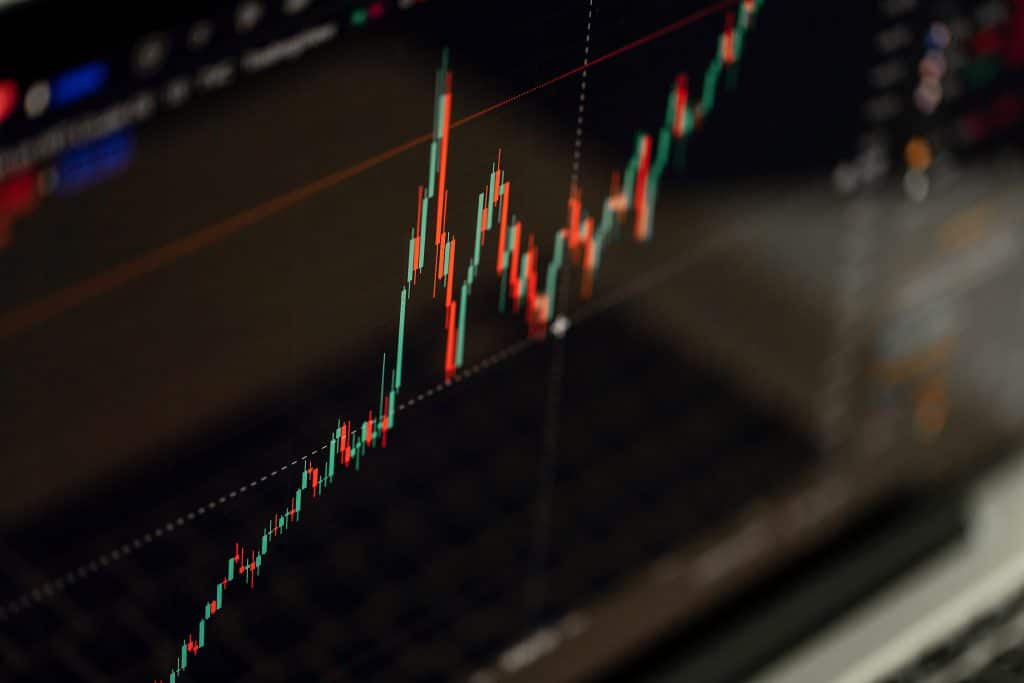How CPI Data Affects the Market
How CPI Data Affects the Market
Understanding the Role of Inflation in Financial Markets
Introduction to How CPI Data Affects the Market

Consumer Price Index (CPI) data plays a critical role in financial markets. As a key measure of inflation, it affects the decisions of policymakers, investors, and traders alike. Understanding how CPI data impacts the market is crucial for anyone involved in trading or investing, as inflation can alter the course of entire economies and asset classes. CPI data is released monthly and reflects the price changes of a basket of goods and services typically consumed by households.
When CPI figures are higher than expected, it often indicates inflationary pressure, which can lead central banks to tighten monetary policy. Conversely, lower-than-expected CPI figures can signal disinflation or deflation, prompting central banks to lower interest rates or stimulate economic activity. Both scenarios can significantly impact stock prices, bond yields, commodity values, and currency exchange rates.
This guide will explore how CPI data affects various markets, its influence on Federal Reserve policies, and how traders and investors can use CPI reports to make informed decisions.
What is the Consumer Price Index (CPI)?
Defining CPI: A Key to Understanding Inflation
What Does CPI Measure?
CPI is a weighted average of the prices of goods and services typically consumed by households, including food, housing, healthcare, transportation, and entertainment. The index serves as a comprehensive snapshot of inflation by showing how the cost of living is changing over time. CPI is crucial for understanding inflation because it reflects how much consumers are paying for essential items, which directly affects their purchasing power.
For example, if the CPI rises by 5% over a year, this means that the average consumer is spending 5% more on the same basket of goods and services than they were a year ago. This loss of purchasing power can lead to slower economic growth if wages do not keep up with inflation.
How is CPI Calculated?
The Bureau of Labor Statistics (BLS) in the U.S. gathers price data on thousands of items every month to calculate the CPI. Each item is assigned a weight based on its relative importance in the typical consumer’s budget. For instance, housing costs, which include rent or mortgage payments, are usually given the highest weight due to their significant impact on household expenses.
The formula for calculating the CPI is as follows:
CPI = (Cost of Basket in Current Year / Cost of Basket in Base Year) x 100
The CPI is expressed as an index, where a value of 100 represents the price level in a base year. An increase in the index over time signifies rising inflation, while a decrease indicates deflation.
Types of CPI Data
- Headline CPI: This figure includes all goods and services, such as food and energy, which are prone to price volatility. While this provides a broad measure of inflation, it can sometimes be distorted by short-term price swings in oil or food commodities.
- Core CPI: Core CPI excludes food and energy prices, offering a clearer picture of long-term inflation trends. Traders and investors often rely on core CPI because it is more stable and reflects underlying inflationary pressures without the noise from temporary price fluctuations.
The Impact of CPI Data on Financial Markets
How CPI Influences Stocks, Bonds, and Currencies
CPI and Stock Market Movements
How Inflation Affects Equity Prices
Inflation has a complex relationship with stock markets. When CPI data signals rising inflation, companies may face higher costs for raw materials, labor, and other inputs. These increased costs can squeeze profit margins, especially for companies that cannot pass the higher costs on to consumers. As a result, stock prices may decline if inflationary pressures are deemed excessive.
Example: Tech Sector vs. Consumer Staples
High-growth sectors like technology are often more vulnerable to rising inflation because these companies typically rely on borrowing to fund their operations. As interest rates rise to counteract inflation, the cost of capital increases, putting pressure on growth stocks. In contrast, sectors like consumer staples, which provide essential products that consumers buy regardless of price increases, tend to be more resilient during inflationary periods.
CPI’s Effect on Bond Markets
The Relationship Between Inflation and Bonds
Bonds are especially sensitive to changes in inflation. Rising inflation diminishes the purchasing power of future bond payments, leading to a sell-off in the bond market and causing yields to rise. This is because investors demand higher yields to compensate for the erosion of their returns due to inflation. For example, if the CPI report shows an unexpected surge in inflation, bondholders might sell off their holdings to avoid losing purchasing power, driving bond prices down and yields up.
Real-life Scenario: 2022 U.S. Inflation Spike
In 2022, when U.S. inflation reached its highest levels in decades, bond prices plummeted as investors braced for aggressive interest rate hikes by the Federal Reserve. Ten-year Treasury yields soared as investors demanded higher returns to offset the inflation risk. This example illustrates how sensitive bond markets can be to CPI data and inflation expectations.
CPI’s Influence on the Currency Market
How Inflation Affects Forex Trading
CPI data plays a pivotal role in the foreign exchange (forex) market. Higher inflation typically leads to higher interest rates, which can boost the value of a nation’s currency. This is because higher interest rates attract foreign investors seeking better returns on fixed-income assets, increasing demand for the domestic currency.
Example: U.S. Dollar Strength
In 2021 and 2022, as U.S. inflation surged, the Federal Reserve began raising interest rates. This led to a strengthening of the U.S. dollar, as investors flocked to U.S. assets that offered higher returns. Currencies of countries with lower inflation and interest rates, such as the Japanese yen, weakened as traders sought out more lucrative opportunities in U.S. markets.
CPI and the Federal Reserve
How Central Bank Decisions are Influenced by CPI Data
Why the Fed Monitors CPI Closely
The Federal Reserve has a dual mandate: to maintain price stability and promote maximum employment. CPI is a critical metric in assessing whether inflation is within acceptable limits. The Fed typically aims for a 2% inflation rate, and when CPI data shows inflation above this target, the central bank may take action to bring it under control by raising interest rates.
Example: 1980s Inflation Control
In the early 1980s, the U.S. faced rampant inflation, with CPI exceeding 10%. To combat this, Federal Reserve Chairman Paul Volcker raised interest rates aggressively, pushing them to nearly 20%. This move curbed inflation but led to a severe recession. This historical example shows the delicate balance central banks must maintain between controlling inflation and supporting economic growth.
CPI Data as a Predictor of Rate Hikes
Investors and traders use CPI data as a leading indicator of potential interest rate hikes. When CPI data shows higher-than-expected inflation, the market anticipates that the Federal Reserve will raise rates to prevent the economy from overheating. These expectations can lead to volatility across asset classes, particularly in interest-rate-sensitive markets like bonds and real estate.
How CPI Affects Different Asset Classes
Adjusting Your Trading Strategy Based on CPI Data
Equities
Stock Market Sensitivity to CPI Changes
Certain sectors, like healthcare and utilities, tend to perform better during inflationary periods because they provide essential goods and services that consumers need regardless of price increases. On the other hand, sectors like technology and consumer discretionary may struggle due to rising input costs and reduced consumer spending power.
Case Study: 2022 Technology Sell-off
In 2022, when inflation surged, technology stocks experienced significant declines. Companies like Apple and Amazon saw their stock prices fall as investors feared the impact of rising interest rates on future growth. Conversely, consumer staples companies like Procter & Gamble performed relatively well, as their products remained in demand despite higher prices.
Bonds
Managing Inflation Risk in Bond Portfolios
To protect against inflation, investors can adjust their bond portfolios by purchasing inflation-protected securities, such as Treasury Inflation-Protected Securities (TIPS). TIPS adjust their principal value in response to changes in CPI, offering a safeguard against inflation’s erosion of fixed-income returns.
Example: Investing in TIPS During Inflationary Periods
During the inflation surge in 2021-2022, many investors shifted their portfolios toward TIPS to preserve purchasing power. These securities provided a hedge against inflation as their value adjusted upward in line with the rising CPI.
Commodities
Inflation and Commodity Prices
Commodities, such as gold, oil, and agricultural products, often perform well during inflationary periods. Since they are physical assets with intrinsic value, their prices tend to rise alongside inflation, providing a hedge against the declining value of paper currency.
Example: Gold as an Inflation Hedge
Historically, gold has been seen as a safe haven during periods of high inflation. In 2022, as inflation surged, gold prices rose as investors sought to protect their portfolios from the erosion of purchasing power caused by rising CPI.
Common Mistakes When Interpreting CPI Data
Pitfalls to Avoid When Using CPI to Make Trading Decisions
Overreacting to Single CPI Reports
Traders should avoid making drastic portfolio adjustments based on a single CPI report. Inflation data can be volatile, and one report may not indicate a long-term trend. It’s important to look at multiple reports and analyze inflation in the context of broader economic data.
Ignoring Core CPI
Headline CPI can be distorted by short-term price swings in volatile sectors like food and energy. Core CPI, which excludes these volatile items, offers a more accurate picture of underlying inflation trends. Traders who focus solely on headline CPI may overestimate inflationary pressures.
Conclusion on How CPI Data Affects the Market
Why Traders Should Monitor CPI Closely
In summary, CPI data has far-reaching effects on financial markets, influencing everything from stock prices and bond yields to currency values and commodity prices. By understanding how inflation data shapes central bank policy and market reactions, traders can make more informed decisions and adjust their strategies accordingly. Monitoring CPI data is essential for staying ahead of market trends and mitigating risks associated with inflation.
Check out our articles on:
- Introduction to Options Trading
- Mastering Butterfly Spreads
- The Power of Diagonal Spreads
- The Power of Iron Condors
- The Power of Vertical Credit Spreads
Elevate Your Trading Skills
Ready to master the art of trading unbalanced flies and other advanced options strategies? Join our exclusive community of traders for in-depth educational resources, live trading sessions, and expert analysis. Sign up today and take your trading to the next level!
Remember, while unbalanced flies can be a powerful addition to your trading toolkit, they should be used as part of a well-rounded, risk-managed trading approach. Always consider your personal financial situation, risk tolerance, and trading goals when implementing any new strategy. Happy trading!
Below are the links:
To your success,

Billy Ribeiro is a renowned name in the world of financial trading, particularly for his exceptional skills in options day trading and swing trading. His unique ability to interpret price action has catapulted him to global fame, earning him the recognition of being one of the finest price action readers worldwide. His deep comprehension of the nuances of the market, coupled with his unparalleled trading acumen, are widely regarded as second to none.
Connect with us:






